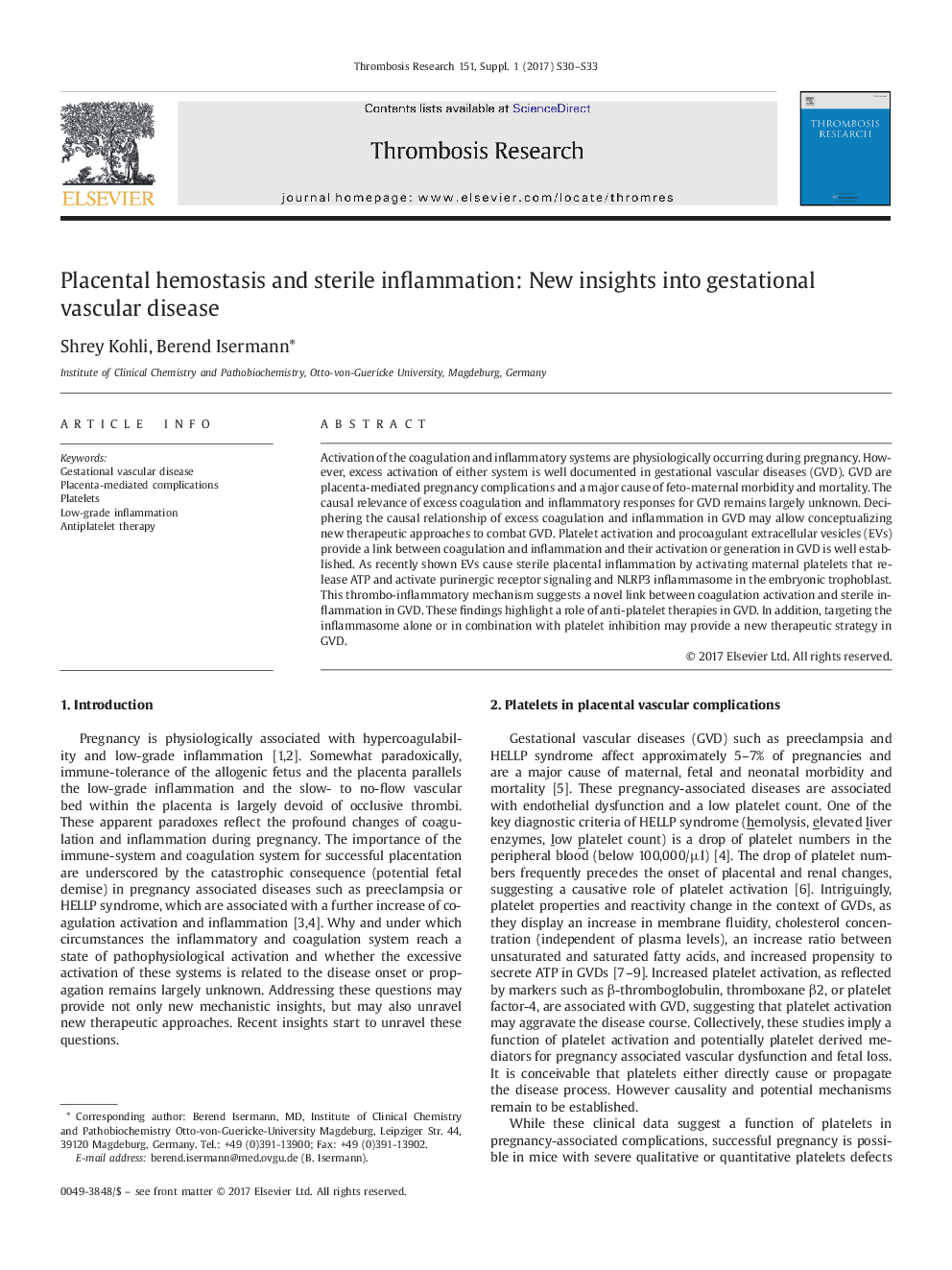ترجمه فارسی عنوان مقاله
هموستاز پلاسبا و التهاب استریل: بینش جدید به بیماری عروق بارداری
عنوان انگلیسی
Placental hemostasis and sterile inflammation: New insights into gestational vascular disease
| کد مقاله | سال انتشار | تعداد صفحات مقاله انگلیسی |
|---|---|---|
| 141561 | 2017 | 4 صفحه PDF |
منبع

Publisher : Elsevier - Science Direct (الزویر - ساینس دایرکت)
Journal : Thrombosis Research, Volume 151, Supplement 1, March 2017, Pages S30-S33
ترجمه کلمات کلیدی
بیماری عروق حاملگی، عوارض ناشی از قطعه قطعه پلاکت ها، التهاب درجه پایین درمان ضدالتهاب،
کلمات کلیدی انگلیسی
Gestational vascular disease; Placenta-mediated complications; Platelets; Low-grade inflammation; Antiplatelet therapy;

